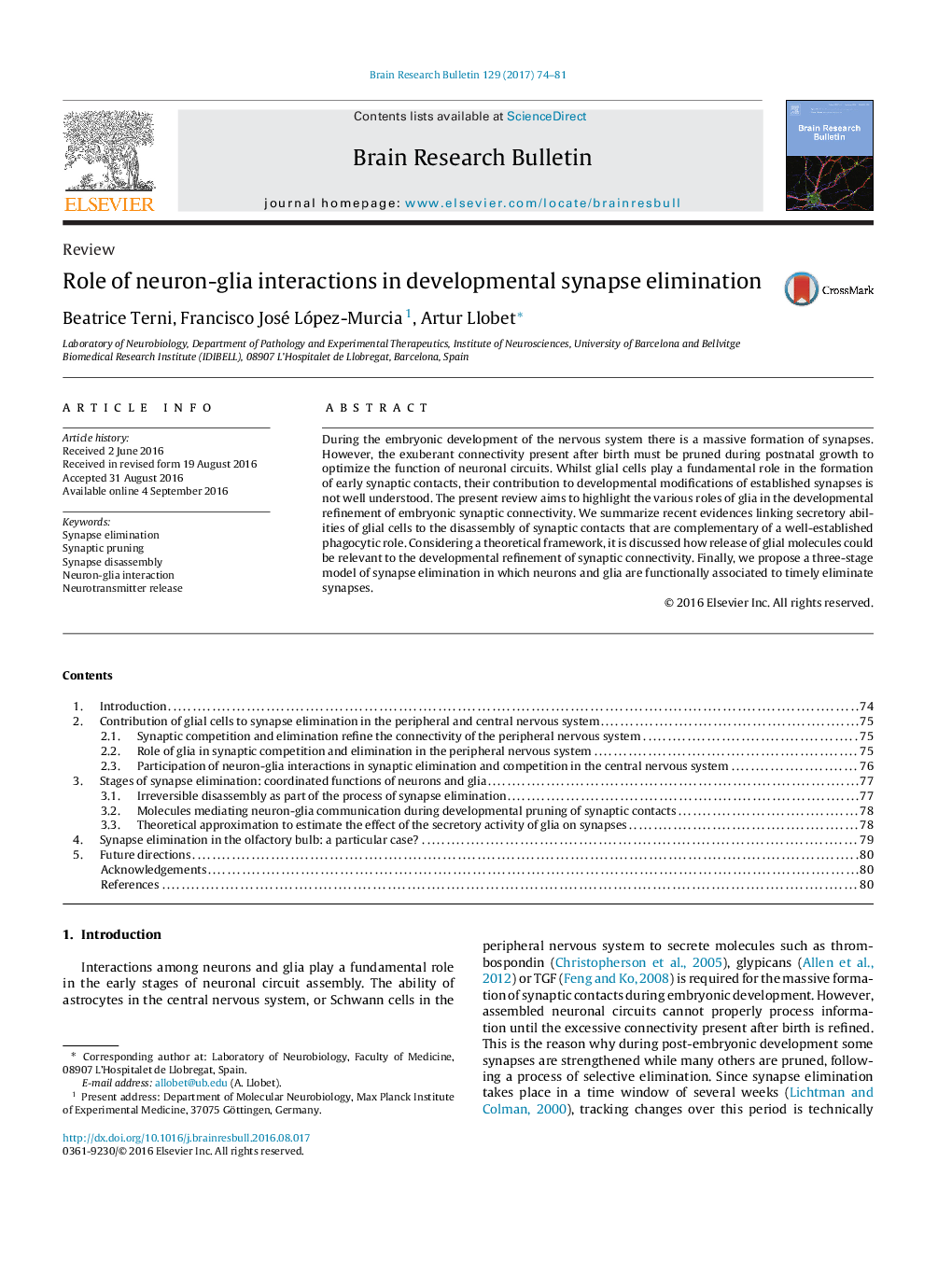| Article ID | Journal | Published Year | Pages | File Type |
|---|---|---|---|---|
| 5736347 | Brain Research Bulletin | 2017 | 8 Pages |
â¢The exuberant synaptic connectivity present after birth is eliminated during postnatal growth.â¢Glia contributes to synapse elimination by secreting specific molecules and phagocytosis.â¢Neurons autonomously eliminate synaptic remnants during postnatal refinement of neuronal circuits.â¢Glial and neuronal functions act in a coordinate manner to shape synaptic connectivity.
During the embryonic development of the nervous system there is a massive formation of synapses. However, the exuberant connectivity present after birth must be pruned during postnatal growth to optimize the function of neuronal circuits. Whilst glial cells play a fundamental role in the formation of early synaptic contacts, their contribution to developmental modifications of established synapses is not well understood. The present review aims to highlight the various roles of glia in the developmental refinement of embryonic synaptic connectivity. We summarize recent evidences linking secretory abilities of glial cells to the disassembly of synaptic contacts that are complementary of a well-established phagocytic role. Considering a theoretical framework, it is discussed how release of glial molecules could be relevant to the developmental refinement of synaptic connectivity. Finally, we propose a three-stage model of synapse elimination in which neurons and glia are functionally associated to timely eliminate synapses.
